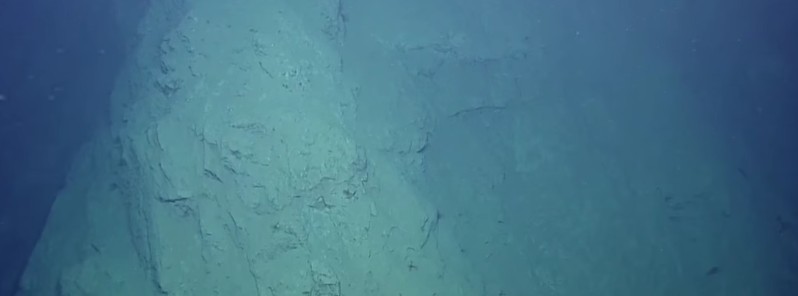Increased activity at Kick ’em Jenny volcano, exclusion zone established

The University of the West Indies (UWI) Seismic Research Centre (SRC) reports an increased activity at Kick 'em Jenny undersea volcano, between Grenada and the Grenadine island of Carriacou. The Alert Level was raised to Yellow (2 of 5).
SRC has recorded a high amplitude signal, lasting about 25 seconds, by Grenada and Montserrat stations, it reported on April 29, 2017. This signal follows an increase in the number of background events associated with the Kick ‘em Jenny volcano. In addition, people from the St. Patrick’s area have reported feeling the quake.
"In light of the ongoing, we are advising all sea users that the 5 km (3.1 miles) exclusion zone of Kick ‘em Jenny be strictly observed," SRC said and advised that heightened alert is necessary for the exclusion zone. A yellow alert means the volcano is restless; seismicity and/or fumarolic activity are above the historical level or other unusual activity has been observed or can be expected without warning.
Recent measurements have indicated that the summit of Kick 'em Jenny is currently too deep beneath the surface of the sea for an eruption to likely trigger a tsunami, the center concluded.
The general population is reminded that the official advisories on this matter and all other disaster-related matters will come directly from the National Disaster Management Agency (NaDMA).
The last time this volcano erupted was in July 2015. Seismicity at the volcano increased on July 11 and on July 23 from 01:25 to 03:00 local time, characterized by a "strong continuous signal." More than 400 micro and small earthquakes had been recorded since July 11, including the largest, M3.3. The Alert Level was raised to Orange on July 23.
At about 02:00 on July 24 an hour-long explosion signal was recorded. Afterward, and through the next day, seismicity declined. Scientists observed nothing out of the ordinary at the surface above the volcano during an overflight on July 25, and by 18:00 no activity was recorded. On July 26, the Alert Level was lowered to Yellow.
Before that, Kick 'em Jenny erupted in December 2001. The first signs of unrest occurred in October when a slight increase in seismicity was recorded near the volcano.
The eruption began on December 4 when a burst of activity started at 06:00 local time, peaking at 11:00. Following a short lull, activity again increased and culminated in bursts of T-phase signals (acoustic waves generated from an earthquake or underwater explosion that travel through the ocean). The signals were detected between 19:18 and 22:31 and were interpreted as explosions associated with a submarine eruption. There was no observed activity on the sea surface. The largest earthquakes associated with the eruption were felt in northern Grenada, ~8 km (5 miles) to the south.
After December, 7 seismicity returned to background levels. During the eruption, the Alert Level was raised from Yellow ("volcano is restless") to Orange ("highly elevated level of seismic and/or fumarolic activity") and returned to Yellow on December 8.
Geological summary
Kick 'em Jenny, a historically active submarine volcano 8 km (5 miles) off the north shore of Grenada, rises 1 300 m (0.8 miles) from the sea floor. Recent bathymetric surveys have shown evidence for a major arcuate collapse structure that was the source of a submarine debris avalanche that traveled more than 15 km (9.3 miles) to the west.
Bathymetry also revealed another submarine cone to the SE, Kick 'em Jack, and submarine lava domes to its south. These and subaerial tuff rings and lava flows at Ile de Caille and other nearby islands may represent a single large volcanic complex.
Numerous historical eruptions, mostly documented by acoustic signals, have occurred at Kick 'em Jenny since 1939, when an eruption cloud rose 275 m (0.17 miles) above the sea surface. Prior to the 1939 eruption, which was witnessed by a large number of people in northern Grenada, there had been no written mention of Kick 'em Jenny. Eruptions have involved both explosive activity and the quiet extrusion of lava flows and lava domes in the summit crater; deep rumbling noises have sometimes been heard onshore. Historical eruptions have modified the morphology of the summit crater. (GVP)
Featured image credit: EVNautilus

Commenting rules and guidelines
We value the thoughts and opinions of our readers and welcome healthy discussions on our website. In order to maintain a respectful and positive community, we ask that all commenters follow these rules:
We reserve the right to remove any comments that violate these rules. By commenting on our website, you agree to abide by these guidelines. Thank you for helping to create a positive and welcoming environment for all.